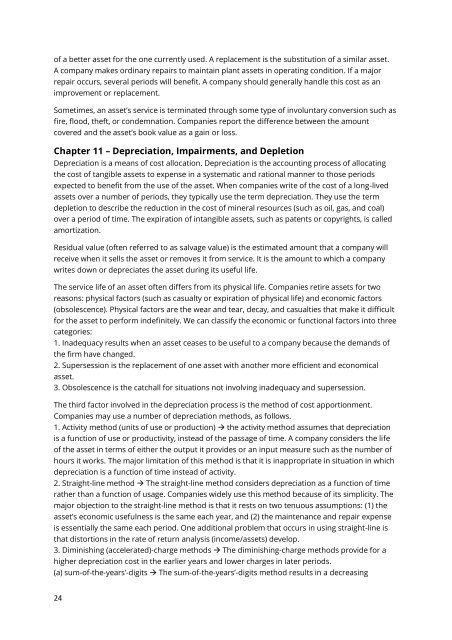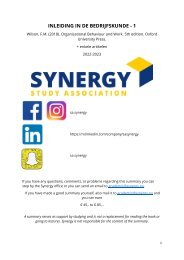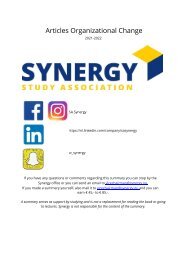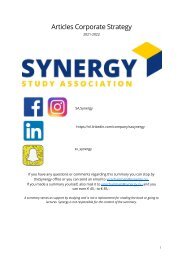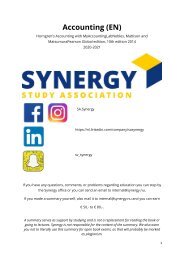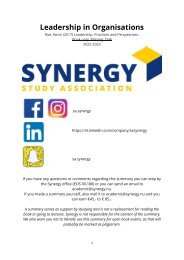Create successful ePaper yourself
Turn your PDF publications into a flip-book with our unique Google optimized e-Paper software.
of a better asset for the one currently used. A replacement is the substitution of a similar asset.<br />
A company makes ordinary repairs to maintain plant assets in operating condition. If a major<br />
repair occurs, several periods will benefit. A company should generally h<strong>and</strong>le this cost as an<br />
improvement or replacement.<br />
Sometimes, an asset’s service is terminated through some type of involuntary conversion such as<br />
fire, flood, theft, or condemnation. Companies report the difference between the amount<br />
covered <strong>and</strong> the asset’s book value as a gain or loss.<br />
Chapter 11 – Depreciation, Impairments, <strong>and</strong> Depletion<br />
Depreciation is a means of cost allocation. Depreciation is the accounting process of allocating<br />
the cost of tangible assets to expense in a systematic <strong>and</strong> rational manner to those periods<br />
expected to benefit from the use of the asset. When companies write of the cost of a long-lived<br />
assets over a number of periods, they typically use the term depreciation. They use the term<br />
depletion to describe the reduction in the cost of mineral resources (such as oil, gas, <strong>and</strong> coal)<br />
over a period of time. The expiration of intangible assets, such as patents or copyrights, is called<br />
amortization.<br />
Residual value (often referred to as salvage value) is the estimated amount that a company will<br />
receive when it sells the asset or removes it from service. It is the amount to which a company<br />
writes down or depreciates the asset during its useful life.<br />
The service life of an asset often differs from its physical life. Companies retire assets for two<br />
reasons: physical factors (such as casualty or expiration of physical life) <strong>and</strong> economic factors<br />
(obsolescence). Physical factors are the wear <strong>and</strong> tear, decay, <strong>and</strong> casualties that make it difficult<br />
for the asset to perform indefinitely. We can classify the economic or functional factors into three<br />
categories:<br />
1. Inadequacy results when an asset ceases to be useful to a company because the dem<strong>and</strong>s of<br />
the firm have changed.<br />
2. Supersession is the replacement of one asset with another more efficient <strong>and</strong> economical<br />
asset.<br />
3. Obsolescence is the catchall for situations not involving inadequacy <strong>and</strong> supersession.<br />
The third factor involved in the depreciation process is the method of cost apportionment.<br />
Companies may use a number of depreciation methods, as follows.<br />
1. Activity method (units of use or production) → the activity method assumes that depreciation<br />
is a function of use or productivity, instead of the passage of time. A company considers the life<br />
of the asset in terms of either the output it provides or an input measure such as the number of<br />
hours it works. The major limitation of this method is that it is inappropriate in situation in which<br />
depreciation is a function of time instead of activity.<br />
2. Straight-line method → The straight-line method considers depreciation as a function of time<br />
rather than a function of usage. Companies widely use this method because of its simplicity. The<br />
major objection to the straight-line method is that it rests on two tenuous assumptions: (1) the<br />
asset’s economic usefulness is the same each year, <strong>and</strong> (2) the maintenance <strong>and</strong> repair expense<br />
is essentially the same each period. One additional problem that occurs in using straight-line is<br />
that distortions in the rate of return analysis (income/assets) develop.<br />
3. Diminishing (accelerated)-charge methods → The diminishing-charge methods provide for a<br />
higher depreciation cost in the earlier years <strong>and</strong> lower charges in later periods.<br />
(a) sum-of-the-years’-digits → The sum-of-the-years’-digits method results in a decreasing<br />
24


